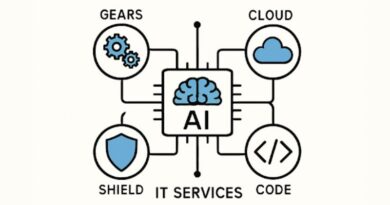AI Creative Testing: Optimizing Ad Performance Through Automation
In the fast-paced world of digital advertising, crafting campaigns that capture attention and drive results is both an art and a science. Artificial intelligence (AI) is transforming this process through creative testing, enabling marketers to optimize ad performance with unprecedented precision and efficiency. By automating the testing of creative elements—headlines, visuals, calls-to-action, and more—AI empowers brands to identify what resonates with audiences and scale successful strategies in real time. This article explores how AI creative testing revolutionizes ad optimization, offering a strategic framework for marketers to elevate campaign impact while minimizing guesswork.
Streamlining Creative Experimentation
Traditional creative testing often involves manual A/B testing, where marketers compare two ad variants to determine which performs better. This process is time-consuming, limited in scope, and prone to human bias. AI creative testing, by contrast, automates and scales experimentation, analyzing thousands of ad variations across multiple variables simultaneously.
For example, a fashion retailer might test ad creatives featuring different images, slogans, and button colors. AI can evaluate combinations—like a bold headline with a minimalist image versus a softer headline with a vibrant photo—to identify which drives higher click-through rates. By processing vast datasets, AI uncovers patterns that humans might overlook, streamlining the path to high-performing ads.
Leveraging Data for Deeper Insights
AI’s ability to analyze diverse data sources—user interactions, browsing behavior, and sentiment expressed on platforms like X—fuels its effectiveness in creative testing. It goes beyond surface-level metrics like clicks, diving into nuanced indicators of engagement, such as time spent on an ad or emotional responses inferred from social media activity.
Consider a travel agency testing ads for a tropical getaway. AI might reveal that ads with sunset beach imagery outperform cityscape visuals among users searching for relaxation-focused vacations. By integrating data from search queries, website visits, and X posts, AI provides a holistic view of what resonates, enabling marketers to refine creatives with precision.
Personalizing Creatives at Scale
One of AI’s most powerful contributions to creative testing is its ability to personalize ads for specific audience segments. Machine learning algorithms identify preferences within subgroups—such as budget travelers versus luxury seekers—and test tailored creatives to maximize relevance.
For instance, a streaming service promoting a new series might use AI to test different trailers: action-packed clips for thrill-seekers and emotional montages for drama fans. By analyzing engagement data, AI determines which creative resonates with each segment and scales it across similar audiences. This personalization ensures ads feel relevant, boosting engagement and conversions without manual intervention.
Optimizing in Real Time
AI creative testing operates in real time, allowing marketers to adapt campaigns as consumer behavior evolves. Unlike traditional testing, which requires waiting for results, AI continuously monitors performance and adjusts variables on the fly, ensuring ads remain effective throughout their run.
Picture a fitness brand launching a campaign for a new protein bar. AI might detect that an ad featuring a gym setting performs well initially but loses traction as audiences shift to outdoor workout trends. The system can automatically test new creatives with trail-running imagery, optimizing performance mid-campaign. This agility minimizes wasted ad spend and keeps campaigns aligned with current preferences.
Predicting Success with Machine Learning
AI’s predictive capabilities take creative testing beyond reactive analysis, forecasting which ad elements are likely to succeed before they’re fully deployed. By modeling historical data and current trends, AI identifies patterns that predict high-performing creatives, reducing trial-and-error.
A tech company advertising a smartwatch, for example, might use AI to predict that ads emphasizing health-tracking features will resonate more than those highlighting design. By prioritizing these insights, marketers can focus testing on high-potential creatives, accelerating the optimization process and improving return on investment.
Navigating Challenges in AI Creative Testing
While AI creative testing offers transformative benefits, it comes with challenges that require careful management. Over-reliance on data-driven insights can stifle human creativity, leading to formulaic ads that lack originality. Marketers should balance AI’s recommendations with creative intuition, using data as a guide rather than a rulebook.
Privacy is another critical consideration. AI relies on consumer data to inform testing, so compliance with regulations like GDPR or CCPA is essential. Transparent data practices and clear consent mechanisms build trust, ensuring campaigns remain ethical. Additionally, marketers must avoid over-optimizing for narrow audiences, which could exclude emerging segments. A holistic approach—combining AI precision with broad creative exploration—mitigates these risks.
Measuring and Iterating for Continuous Improvement
AI creative testing thrives on iterative refinement. By tracking metrics like engagement rates, conversions, and cost-per-click, AI provides a feedback loop that informs ongoing optimization. This data-driven cycle ensures campaigns evolve with audience preferences, maximizing long-term impact.
For example, a beverage brand testing ads for a new energy drink might find that humorous taglines outperform motivational ones among younger audiences. AI can then test variations of humor-driven ads, refining tone and imagery to further boost performance. This continuous improvement keeps campaigns fresh and effective, adapting to shifts in consumer sentiment.
Driving Engagement and Loyalty
AI creative testing doesn’t just optimize for immediate results—it supports long-term engagement and loyalty. By identifying creatives that resonate deeply, AI helps brands create memorable experiences that encourage repeat interactions and advocacy.
Imagine a skincare brand using AI to test ad visuals. If data shows that authentic, user-generated images outperform polished studio shots, the brand can incorporate more real-customer content, fostering a sense of community. Satisfied customers might share their experiences on X, amplifying reach organically and restarting the customer journey for new audiences.
Revolutionizing Ad Performance with AI
AI creative testing is reshaping how marketers optimize ad performance, offering a scalable, data-driven approach to campaign success. By automating experimentation, personalizing creatives, and enabling real-time adjustments, AI ensures ads resonate with precision and impact. Despite challenges like privacy and over-optimization, a balanced approach—blending AI insights with human creativity—unlocks its full potential. From sparking initial engagement to fostering loyalty, AI creative testing empowers marketers to craft campaigns that not only perform but also inspire, driving meaningful connections in an increasingly competitive digital landscape.




